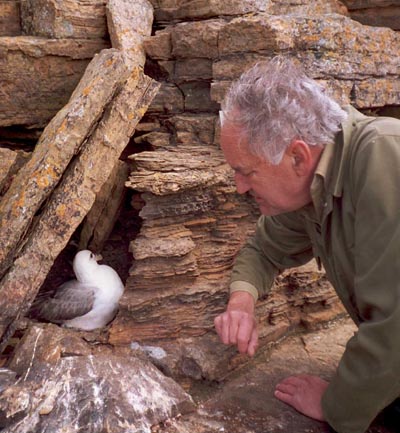
Since 2000, the study has been integrated into the Lighthouse Field Station's studies of marine mammal and seabird ecology. This long time-series of data has allowed us to explore the drivers of population dynamics over a period where there have been marked changes in seabird population trends in the North Atlantic, and carry out comparative studies with colleagues at other colonies in the region. Most recently, these collaborations have used new tracking technologies and modelling approaches to understand these birds' life at sea and identify interactions with commercial fisheries.
Example studies
Edwards, E.W.J., Quinn, L.R. & Thompson, P.M. (2016) State-space modelling of geolocation data reveals sex-differences in the use of different North East Atlantic management areas by breeding northern fulmars. Journal of Applied Ecology, 53:1880-1889
Thompson, P.M. & Ollason, J. C. (2001) Lagged effects of ocean climate change on fulmar population dynamics. Nature, 413: 417-420.
